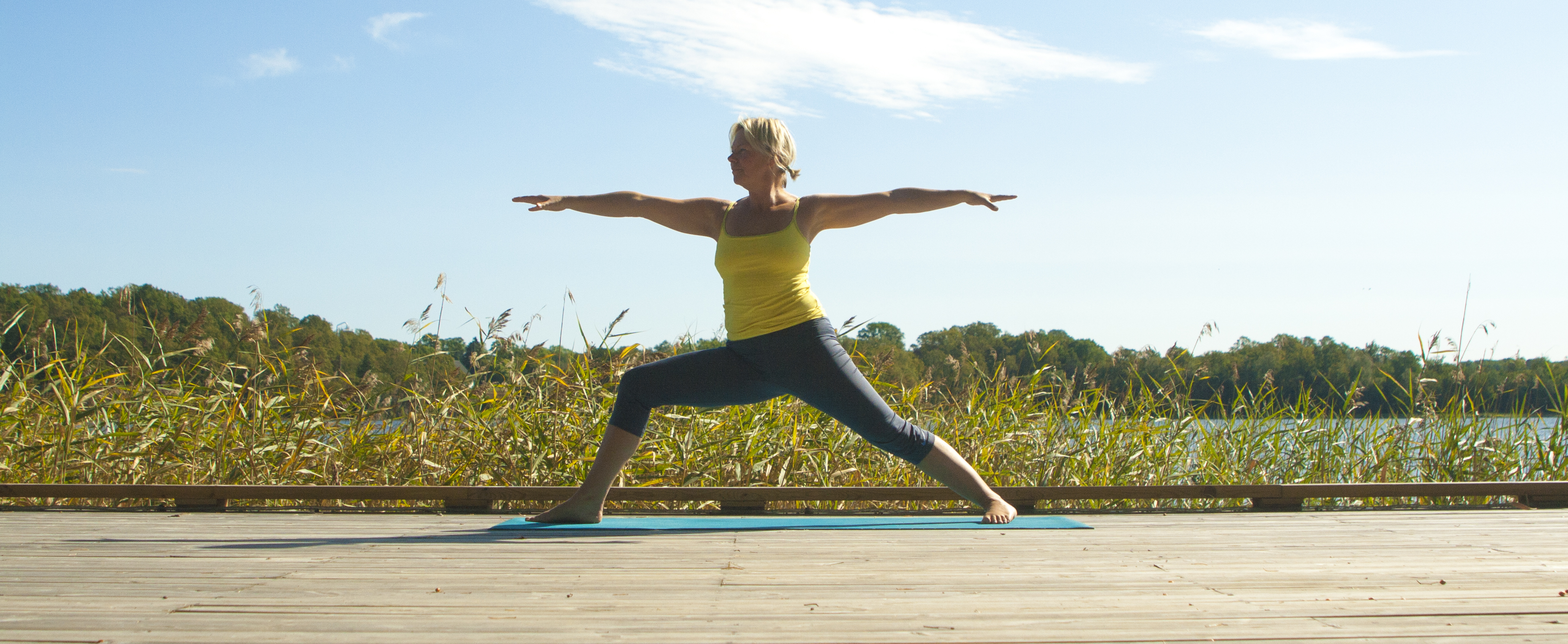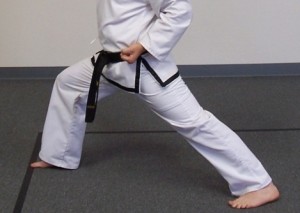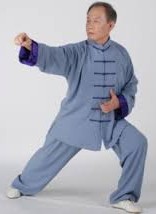Its not wrong but as Jules Mitchell points out in her blog it should´nt be the end of the story.
Biomechanics is about how loads effects the body.
Many
of us have developed postural habits that load the body in ways that
now makes us feel less than optimal. Compensatory patterns drives the
body and may have done for so long that we think its the body natural
state.
If
the patella (kneecap) is slightly dislocated, maybe effected by years
of walking with a particular gait pattern, it will create a situation
where the knee will loose its optimal range of motion and probably find
itself on a new bony surface that creates friction. Ouch!
If
we take this pattern with us when performing a warrior 2 it will do
more harm than good and then its definitly a good option to learn to
align the knee straight forward (as long as we also consider other
important "dots" in the equation such as the feet placement etcetera).
But
though the knee may experience its biggest or most common range of
motion in extension and flexion the knee joint is as Jules Mitchell
explain a " bicondylar hinge joint with six degrees of freedom (flexion
and extension, external and internal rotation, varus and valgus
angulation, anterior and posterior glide, medial and lateral shift,
compression and distraction)" And her point is that if you are only
working the knee joint in one type of movement it can actually be more
damaging for its ability to withstand loads in other joint positions.
When
my kids where younger we trained taekwondo together in a club. And it
have confused me a bit when I in martial arts learned and have seen
movements and stances where the angles in the knee joints is what we in
yoga learn as being unsafe and potentially pro to injuries.
When
moving in for example taekwondo, Tai Chi or Qi Gong they sometimes go
far over the knee or let the foot angle inward or outward while they
bending deep in their knee seemingly following a whole bunch of other
rules than those we see and learn in our yoga practice.
If
I remember it right from my glorious ;) but very short career as a
taekwondo power mama, alignment never got discussed. What got discussed
though was how the body related to the center of mass and flow of
energy.
I´m
not a bio mechanist (when checking out the education I got really
discouraged, there where simple to much math and physics for me) so I
trust a smart women as Jules Mitchell to translate the mystical codes
from the bio mechanical sheets to me. And though I don´t understand the
math, it makes sense to me when Jules Mitchells says that our bodies are
designed to move in numbers of ways. It makes sense that a joints
ability to move in different ways is not potential harmful unless you
throw some weird loads and frequent repetitions into the cocktail.
So do we dare to jump out and try to experience new angles in the knee joint when we for example doing our warrior 2?
We should! But first we have to set something straight.
You
can´t isolate the knee from what happens in the foot and in the hip,
it´s all about loads remember;) so how we position the other joints and
activating our muscles is important for our ability to improve ROM
(range of motion) in the kneejoint in the most safe way.
If
your foot is collapsed while turning it inwards your knee will follow
and equally collapse inwards. That is not an optimal load for your bones
and this will strain the ligaments and tissues in an unhealthy way at
least when done over and over again.
How
mobile you are in your hip joints will also effect how deep you should
go when bending your knee. Maybe you have to make a shorter stand and/or
angel the back foot inward to some degree.
And
maybe you also have to take the amount of time in consideration. Are
you in the mood for a practice with long holds or are you in the mood
for moving?
I
think my dear and awesome teacher in taekwondo learned me something
really useful that may be as good as this yogic obsession with straight
lines (and I´m the first one to admit how desperate I have tried to
follow the yoga regiment of straight lines!!) and its about how to find
and move from your center in any position. A collapsed foot is an
uncentered foot, as a collapsed knee is an uncentered knee.
But
a knee joint that are able to move in and out from the center,
adjusting to the various load transmitted trough it, is a safe and happy
knee joint.
In
the following video I vary the placement of the front foot in standing
side angle pose and reversed warrior. When you try it your self it is
most important that you engage the muscles in the feet and in your leg
and working with an slightly isometric contraction between the feet in
order to let the bones transmit force in the best way.
(If
you feel any discomfort I trust you are wise enough to just let it be
an interesting questioning of all the shoulds we have learned in in
yoga.)
Want to try it? :)



Inga kommentarer:
Skicka en kommentar